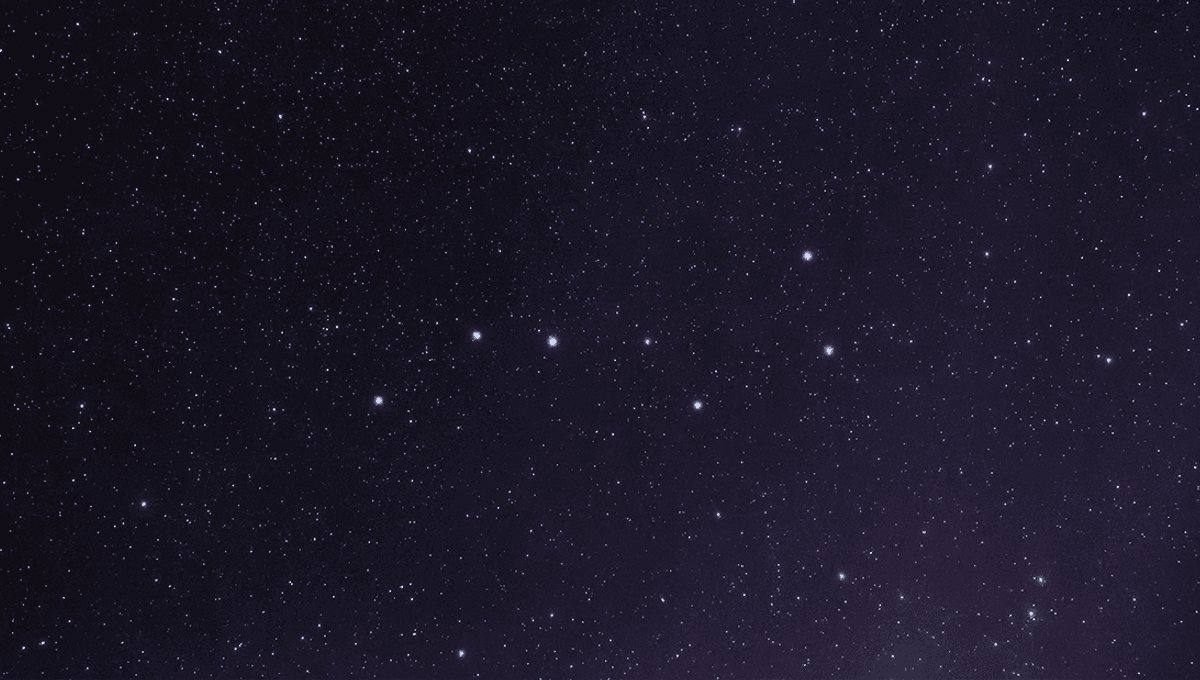
When astronomers first spotted Ursa Major III/UNIONS 1, it caused a little excitement. The group of stars at the edge of the Milky Way, not adding up to much more than 16 solar masses, appeared to be an ultra-faint galaxy orbiting our own.
“UMa3/U1 is located in the Ursa Major (Great Bear) constellation, home of the Big Dipper. It is in our cosmic backyard, relatively speaking, at about 30,000 light-years from the sun,” Simon Smith, an astronomy graduate student at the University of Victoria and lead author of an early study of the potential galaxy, said in a 2024 statement. “UMa3/U1 had escaped detection until now due to its extremely low luminosity.”
The group was first spotted using Ultraviolet Near Infrared Optical Northern Survey (UNIONS) at CFHT and Pan-STARRS. Observations of the group of stars revealed a few possibilities, both of which were pretty interesting, and could better our understanding of galaxy formation.
“There are so few stars in UMa3/U1 that one might reasonably question whether it’s just a chance grouping of similar stars. Keck was critical in showing this is not the case,” co-author Marla Geha, professor of astronomy and physics at Yale University, added. “Our DEIMOS measurements clearly show all the stars are moving through space at very similar velocities and appear to share similar chemistries.”
The stars inside were thought to be over 10 billion years old. What’s so surprising is that they are grouped together at all.
“The object is so puny that its long-term survival is very surprising. One might have expected the harsh tidal forces from the Milky Way’s disk to have ripped the system apart by now, leaving no observable remnant,” Will Cerny, Yale University graduate student and second author on that early study, added. “The fact that the system appears intact leads to two equally interesting possibilities. Either UMa3/U1 is a tiny galaxy stabilized by large amounts of dark matter, or it’s a star cluster we’ve observed at a very special time before its imminent demise.”
In short, if it is a galaxy, it would be the smallest galaxy we have found and likely stabilized by a lot of dark matter. If it isn’t, it’s not clear how it has survived intact, and it’s possible we are seeing a fleeting moment of stability before it is ripped apart by our galaxy.
Since then, there have been a number of studies on UMa3/U1 to get a better idea of what’s going on. If it is a galaxy, there would be a clustering of mass towards the center, whereas in a star cluster, the mass would be more evenly distributed. In a new study, scientists conducted a “mass function” to see whether UMa3/U1 was a better fit for a galaxy or star cluster, finding that the distribution fits better with a cluster of stars.
In a second part of their study, the team conducted simulations of the stars assuming they were a star cluster, in an attempt to see how long such a cluster could survive. The team found that as a star cluster, it is possible that it could survive for another 2-3 billion years.
“Compact stellar remnants, predominantly white dwarfs formed through stellar evolution, comprise a substantial fraction of the mass of U1 and, through mass segregation, concentrate in the core of the cluster,” the team explains in their paper.
“This enhanced central mass concentration deepens the gravitational potential, increases the binding energy, and prolongs the cluster’s relaxation time, collectively extending U1’s remaining lifetime. In contrast, Errani et al. (2024) did not include stellar evolution (and therefore omitted compact remnants) in their models, which largely explains why they predict a shorter remaining lifetime for UMa3/U1.”
While still not conclusive, the team believes it is more likely that UMa3/U1 is a star cluster than the smallest galaxy we have ever found.
“We recommend that future observational studies of UMa3/U1 obtain photometric data down to an apparent magnitude of 25 and apply the mass function test outlined in this paper,” the team concludes.
“With ongoing and upcoming surveys such as the Legacy Survey of Space and Time (LSST) by the Vera C. Rubin Observatory, the Dark Energy Survey (DES), and Pan-STARRS expected to uncover numerous faint Milky Way satellites over the next decade, the present-day mass function holds significant potential for revealing the true nature of these systems and thereby advancing cosmological models.”
The study is published in Monthly Notices of the Royal Astronomical Society.
Source Link: UMa3/U1: Is This The Smallest Galaxy Ever Discovered, Or Something Else?